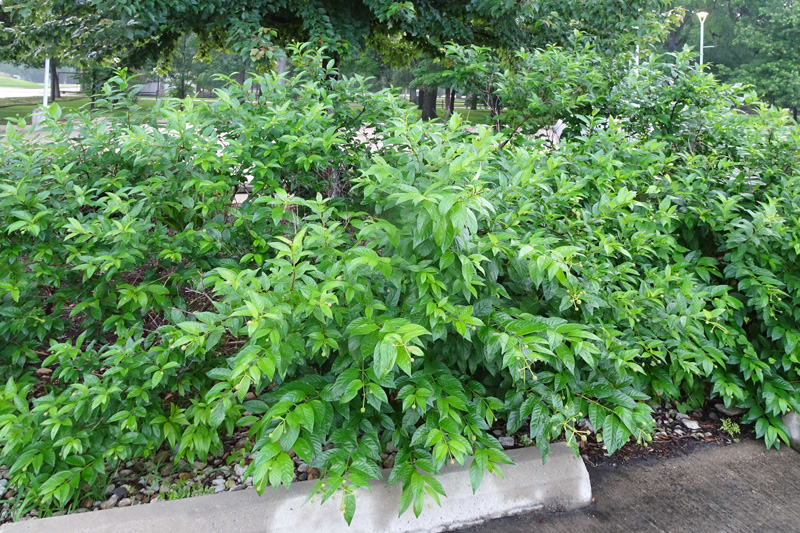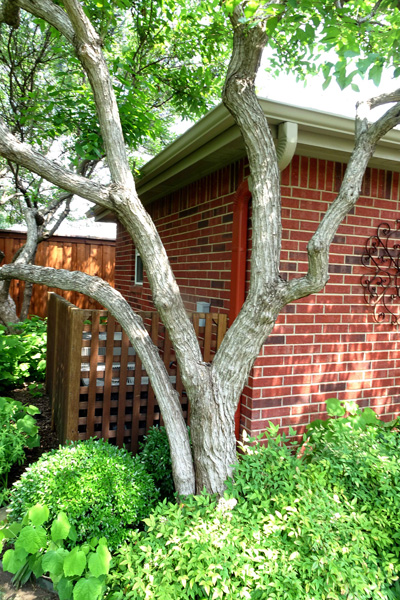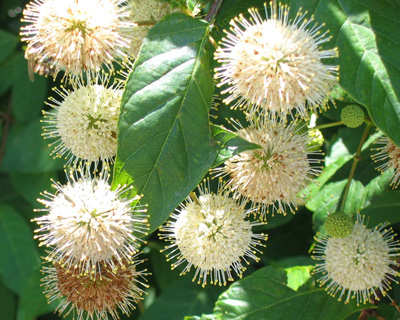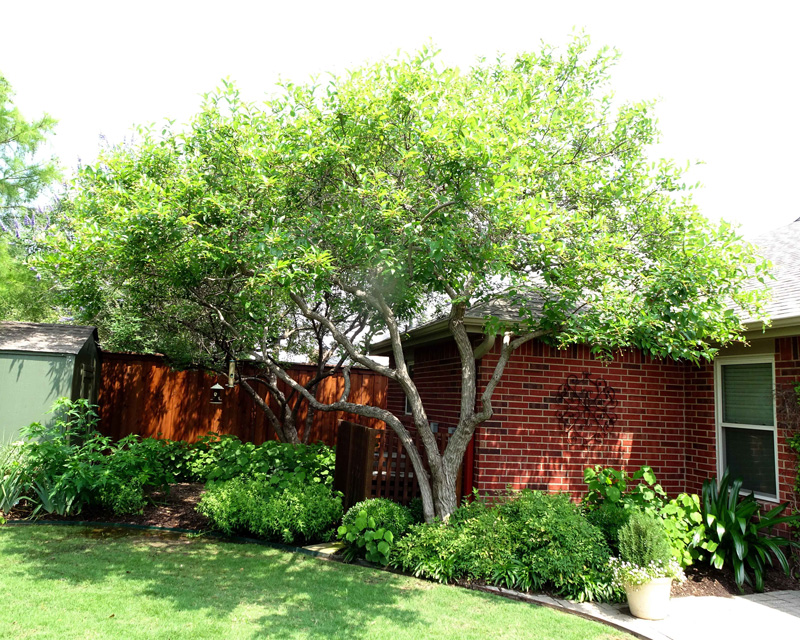Buttonbush Dazzles with Form, Foliage and Flowers by Steve Huddleston

Buttonbush (Cephalanthus occidentalis) graces the shorelines of lakes in Texas with its attractive, glossy green leaves and spherical, pincushion-like flowers.
Buttonbush grows to form a multi-trunked, large shrub or small tree with a rounded growth habit and irregular crown that often consists of crooked and sometimes leaning branches. It usually reaches a height of 6 to 12 ft., although it may grow as tall as 20 ft.

Trained into a tree form, the trunks over time assume a rather twisted, gnarled form that lends much interest to the landscape, especially during the winter when the trunks are fully exposed.
During the growing season, buttonbush sports long, narrow leaves up to 8 in. long that create a lush, green canopy. In the fall, the leaves turn yellow, then brown, before dropping.
The glory of buttonbush is the abundance of exotic, white or pale pink flowers that adorn the tree primarily in June, although the tree may continue to bloom through September.

The flowers are 1-in.-wide globes with protruding pistils that make the floral spheres look like little pincushions. The flowers exude a wonderful, peach-like fragrance reminiscent of mimosa blossoms. These flowers are full of nectar that attracts bees, butterflies, and hummingbirds. Buttonbush is a great plant to have if you want to encourage the production of local honey, and it’s a must for a butterfly garden.
At the end of the season, the flowers turn into little brown, button-like balls consisting of multiple, tiny, two-seeded nutlets that persist on the tree through the winter. Ducks and other water birds enjoy dining on the seeds. The seeds germinate readily, which means seedlings can appear in beds or turf beneath this tree.
If you have a wet spot in your garden, consider planting this native beauty that will dazzle you with its form, foliage and flowers.
Here’s what you’ll want to know….
• Latin name is Cephalanthus occidentalis. It’s in the Rubiaceae, or Madder family.
• It’s native to Texas. For that matter, it’s native to most of the U.S. except the mountainous West and the Pacific Northwest.
• Adapted to USDA hardiness zones 5-9.
• If you decide to grow it tree-form, select the strongest, best-formed trunks to serve as the permanent structure of the tree, and remove those that are weak or superfluous. Suckers occasionally appear around the bases of trees, but you can easily remove these with shears or a sharpshooter.
• ‘Sugar Shack’ is a cultivar that grows only 3 to 4 ft. tall and wide. It has the same white, spherical flowers as the species, but the flowers turn into red fruits rather than the brown ones of the species. Because of its size, it can also function well in a large container.

